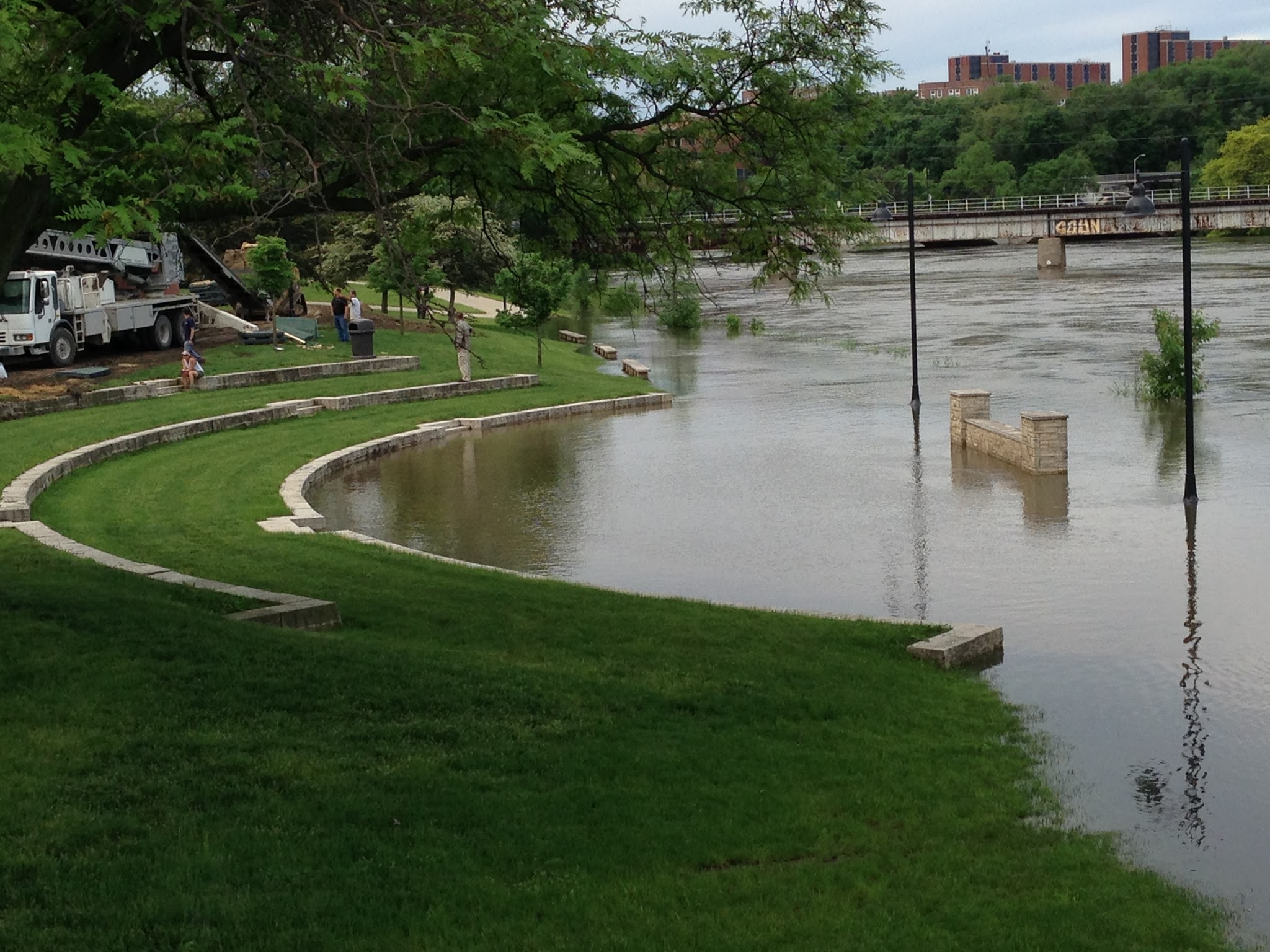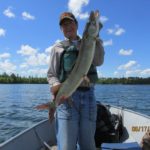Post written by Melissa Miller, Associate Director for the Iowa Water Center
![IMG_E6094[1]](https://www.iowawatercenter.org/wp-content/uploads/2019/07/img_e60941.jpg)
One of the greatest benefits of being part of the National Institutes for Water Resources is the connection to the other 53 Water Resources Research Institutes across the country – including those in surrounding states. Last week, Iowa Water Center staff took a day trip up to the St. Paul campus of the University of Minnesota to visit the Minnesota Water Resources Center (MWRC) staff.
We had a full agenda for the day, well-planned by Iowa State University alum Adam Wilke, who serves as the MWRC Research and Outreach Coordinator.
After a quick tour of the campus with our colleagues MWRC Director Jeff Peterson and Associate Director Joel Larson, we visited with MWRC’s Ann Lewandowski and Matt Drewitz from the Minnesota Board of Soil and Water Resources on the best outreach and communication methods for the Daily Erosion Project (coverage for the entire state of Minnesota coming very soon!).
Next, Leif Olmanson from UMN’s Remote Sensing and Geospatial Analysis Laboratory and Ben Page from MWRC introduced us to remotely sensed water quality monitoring in Minnesota lakes with their tool, LakeBrowser. This technology is helping Minnesotans keep an eye on water clarity, chlorophyll, suspended solids, and colored dissolved organic matter on all lakes in the state over 10 acres. LakeBrowser covers some lakes in Iowa and can be expanded outside the borders of Minnesota.
We enjoyed lunch with the entire MWRC crew. Afterward, we joined in a planning call for the University Council of Water Resources annual conference, to be held in Minneapolis June 9-11. The theme for the 2020 UCOWR Annual Conference is “Water. Place. People.” The call for special sessions is now open – this is a great conference for university researchers and students, and we encourage you to submit a session idea.
![IMG_6100[1]](https://www.iowawatercenter.org/wp-content/uploads/2019/07/img_61001.jpg) To round out the day, we headed over to the banks of the Mississippi River to chat with Pat Nunnally from UMN’s River Life program. We talked about the history of the Mississippi and River Life’s interdisciplinary journal Open Rivers, which features fascinating pieces that explore topics on water, place, and community. We also got to witness Pat in action, as a mudslide on the banks that morning brought television news crews to the scene, wondering how and why these things occur (Pat makes an appearance around 1:35). Thankfully, we managed to avoid any cameos in the news story!
To round out the day, we headed over to the banks of the Mississippi River to chat with Pat Nunnally from UMN’s River Life program. We talked about the history of the Mississippi and River Life’s interdisciplinary journal Open Rivers, which features fascinating pieces that explore topics on water, place, and community. We also got to witness Pat in action, as a mudslide on the banks that morning brought television news crews to the scene, wondering how and why these things occur (Pat makes an appearance around 1:35). Thankfully, we managed to avoid any cameos in the news story!
![IMG_6098[1]](https://www.iowawatercenter.org/wp-content/uploads/2019/07/img_60981-1.jpg) We want to sincerely thank the entire UMN staff for their hospitality. We came away with actionable items to increase our collaboration between the two centers and throughout the region, as well as some great ideas we might borrow from UMN to incorporate here in Iowa and at IWC. We look forward to their visit to Iowa next spring!
We want to sincerely thank the entire UMN staff for their hospitality. We came away with actionable items to increase our collaboration between the two centers and throughout the region, as well as some great ideas we might borrow from UMN to incorporate here in Iowa and at IWC. We look forward to their visit to Iowa next spring!
 Melissa Miller is the associate director of the Iowa Water Center. She holds a BS in Kinesiology with an emphasis in Community and Public Health and MS degree in Community Development with an emphasis in Natural Resource Management, both from Iowa State University.
Melissa Miller is the associate director of the Iowa Water Center. She holds a BS in Kinesiology with an emphasis in Community and Public Health and MS degree in Community Development with an emphasis in Natural Resource Management, both from Iowa State University.






